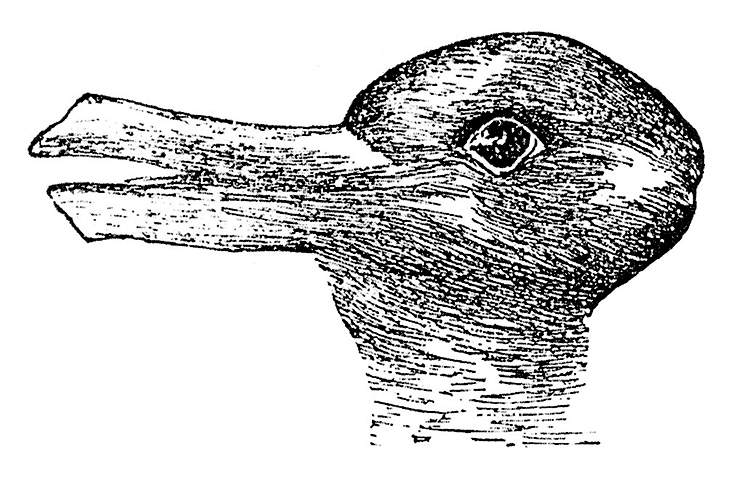
What animal do you see in this picture?
I have a special reason for asking. I’ve seen several examples like this on Facebook (and for me they get old in a hurry), but this particular picture is famous in psychology circles. It’s an original illustration by psychologist Joseph Jastrow (photo by him) that was used in some ground-breaking research. When shown on Easter Sunday, more children see the rabbit; on other Sundays they are more likely to see the duck. And switching back and forth requires some concentration.
This illustrates how your brain frequently thinks on its own. Lisa Feldman Barrett, head of the Interdisciplinary Affective Science Laboratory at Northeastern University, calls the brain an “inference generating organ.” Basically, the brain has more connections between neurons than connections bringing information from your senses. This means the picture your brain gets is incomplete, so it fills in the details. Barrett calls this “predictive coding,” which means your brain drives your perceptions by predicting what it thinks, then corrects with input from the real world. Otherwise, there would be too much input to process. When “the sensory information that comes in does not match your prediction,” Barrett says, “you either change your prediction—or you change the sensory information that you receive.”
This is a very simplified explanation, so for the complete story, see “How Your Brain Decides Without You: In a world full of ambiguity, we see what we want to see” by Tom Vanderbilt (https://getpocket.com/explore/item/how-your-brain-decides-without-you)
Happy staring!
